Telemecanique Tools, measuring instruments and protection


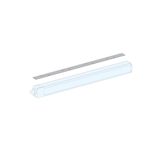
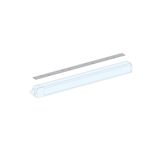
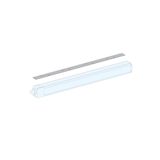

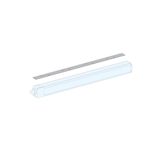

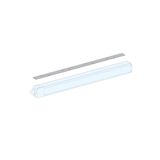
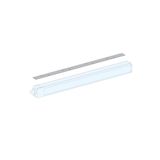
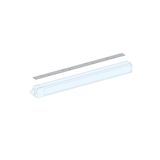
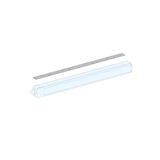
telemecanique measuring instruments for commissioning and service
Handheld and DIN-rail analyzers verify voltage quality, loop integrity, and insulation before handover. True RMS, low-ohm continuity at 200 mA, insulation at 250 500 1000 V, and loop impedance cover most building tasks. Accuracy sits around 0.5–1.0 percent for voltage and 1.0–1.5 percent for current with 6000–20000 count displays and data logging at 1 s to 60 min. CAT III 600 V and CAT IV 300 V practice with fused leads keeps crews safe. In dense panels, telemecanique measuring instruments help confirm wiring without disturbing adjacent rails and record thresholds directly against circuit IDs.
telemecanique tools and testing equipment suited to real panels
Clamp meters with 16–40 mm jaws read AC and DC to 600 A; insulation testers store PI and DAR; IR probes check hotspot rise on breakers. Select low Z modes near long feeders to tame ghost voltages and guarded terminals for stable high resistance readings. For repetitive floor work, preloaded templates reduce button presses. Crews pair label printers and shrouded probes so reports match drawings; telemecanique tools and testing equipment then close out rooms with predictable steps and no custom setup.
telemecanique protection devices for verification and lockout
Voltage presence indicators, proving units, and two pole testers confirm isolation before work. Non contact detectors triage circuits in congested ducts, while lockout hasps and breaker clips establish safe conditions around live rows. Surges are checked with plug in checkers and SPD status contacts. With doors open, touch safe tips and IP rated gloves keep fingers clear. Using telemecanique protection devices across all boards aligns safety routine, label wording, and storage so night shifts repeat the same sequence.
telemecanique electrical measuring tools covering power and energy
Rail meters read three phase energy, demand, power factor, and THD with 1 s to 15 min integration. CT inputs accept 1 A 5 A and Rogowski with on meter scaling; pulse outputs feed sub metering and RS 485 Modbus or Ethernet exposes registers to BMS. Voltage input burden remains low so shared PTs stay in spec. In multi tenant cores, telemecanique electrical measuring tools keep footprints to six modules and maintain door clearance with consistent 35 mm rail depth.
telemecanique diagnostic instruments that shorten fault finding
Event capture at 2–10 kS s records inrush and contact chatter; harmonic snapshots confirm driver compatibility; milliamp ranges verify 4–20 mA loops without breaking the circuit. Clamp leakage ranges find nuisance RCD trips. Endoscope cameras and compact thermal imagers locate loose terminations without ceiling removal. By storing project tags and limit profiles, telemecanique diagnostic instruments let techs walk risers and certify lines in one pass.
telemecanique safety equipment aligned to site practice
CAT rated leads with finger guards, insulated torque drivers, arc rated face shields, and lockable covers match cabinet work. Ferrule crimpers and push in tools keep hands outside live zones and reduce slip. For rooftops and car parks, IP rated cases protect testers in wet weather. Stocking teleguides, gloves, and retention straps as part of telemecanique safety equipment prevents improvisation and keeps audit logs clean.
telemecanique calibration devices for traceability and repeatability
Loop and process calibrators source and measure 4–20 mA with 24 V loop power, simulate thermocouples and RTDs, and output 0–10 V for actuator checks. Typical basic accuracy reaches 0.05 percent with fine and coarse adjust and step or ramp programs. Decade boxes confirm resistance input scaling, while reference clamps validate current ranges. Annual certificates attach to serials and QR labels; teams register teIemecanique calibration devices in the asset list so due dates and drift trends are visible.
Applications and integration across control rooms and plant areas
Office cores and hotels need rapid insulation and loop checks before ceiling close, while plant rooms rely on leakage and harmonic tools near VFDs. DIN analyzers, meters, and test points share 6 module footprints and the same marker style as terminal blocks, relay rows, and drives, so wiring ducts and door clearances remain predictable. Using a single accessory language keeps ferrules, probes, and CT plugs consistent from cabinet to cabinet.
Selection criteria for B2B buyers
Define the task first commissioning fault finding or energy reporting. Match CAT rating to fault level and pick communication options RS 485 or Ethernet by BMS plan. Confirm jaw opening for busbar stacks, lead tip type for narrow doors, and memory for long trend capture. Standardise batteries chargers and fuse sizes to cut spares. Document strip windows and torque values for any accessory terminals that land in the test loop.
Advantages of working with Bankoflamps
We align procurement to commissioning windows. Quotes with EAN and MPN arrive in about an hour, and live EU stock appears before teams are booked. Your portal shows lead times, shipment progress, and downloadable price files with validity windows you can plan against. Trusted accounts use post payment up to 30 days. We consolidate partials so cases arrive room bundled, and your account manager checks CAT classes, CT ratios, memory options, communication ports, lead kits, and torque ranges against your drawings to keep deliveries site ready across France, the Baltics, Germany, Spain, Italy, Belgium, and the Netherlands.